Products
-

Precision Polished Aspheric Lenses
Small aspheric glass lenses can be made by molding, which allows cheap mass production. Due to their low cost and good performance, molded aspheres are commonly used in inexpensive consumer cameras, camera phones, and CD players.They are also commonly used for laser diode collimation, and for coupling light into and out of optical fibers. -

Customized Sapphire/Fused Silica/Bk7 Optical Aspherical Lens
An aspheric lens or asphere (often labeled ASPH on eye pieces) is a lens whose surface profiles are not portions of a sphere or cylinder. The asphere’s more complex surface profile can reduce or eliminate spherical aberration and also reduce other optical aberrations such as astigmatism, compared to a simple lens. A single aspheric lens can often replace a much more complex multi-lens system. -
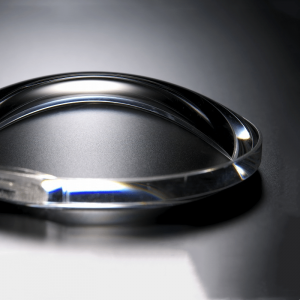
Factory Supply Optical Convex Lens transparent Silicone Optical Aspherical Lens for Stage Light
Small aspheric glass lenses can be made by molding, which allows cheap mass production. Due to their low cost and good performance, molded aspheres are commonly used in inexpensive consumer cameras, camera phones, and CD players.They are also commonly used for laser diode collimation, and for coupling light into and out of optical fibers.
Larger aspheres are made by grinding and polishing. Lenses produced by these techniques are used in telescopes, projection TVs, missile guidance systems, and scientific research instruments. They can be made by point-contact contouring to roughly the right form which is then polished to its final shape. In other designs, such as the Schmidt systems, the aspheric corrector plate can be made by using a vacuum to distort an optically parallel plate into a curve which is then polished "flat" on one side. Aspheric surfaces can also be made by polishing with a small tool with a compliant surface that conforms to the optic, although precise control of the surface form and quality is difficult, and the results may change as the tool wears. -
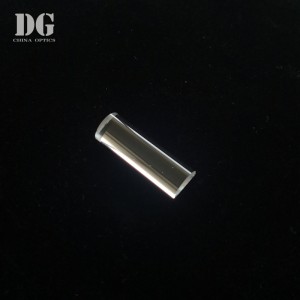
Cylindrical lenses
Cylinder lenses are a type of lens that have differing radii in the X and Y axes, causing the lens to have a cylindrical or semi-cylindrical shape, and image magnification in only a single axis. Cylinder lenses are commonly used as laser line generators, or to adjust image height size or correct for astigmatism in imaging systems. -
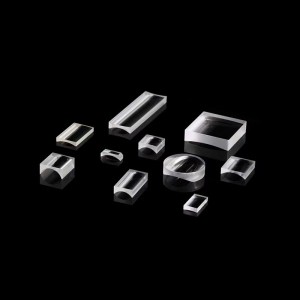
Positive Cylindrical Lenses Plano-Convex Cylinder Lenses
A Cylindrical lens is a special type of cylinder lens, and is highly polished on the circumference and ground on both ends. Cylindrical lenses perform in a manner analogous to a standard cylinder lens, and can be used in beam shaping and to focus collimated light into a line. -

Popular Bk7 Diameter 74mm Anti-reflection Coating Optical Glass Plano-convex Cylindrincal Lens
A Cylindrical lens is a special type of cylinder lens, and is highly polished on the circumference and ground on both ends. Cylindrical lenses perform in a manner analogous to a standard cylinder lens, and can be used in beam shaping and to focus collimated light into a line. Cylindrical lenses are optical lenses which are curved only in one direction. Therefore, they focus or defocus light only in one direction, for example in the horizontal direction but not in the vertical direction. As for ordinary lenses, their focusing or defocusing behavior can be characterized with a focal length or its inverse, the dioptric power. Cylindrical lenses can be used to obtain a beam focus of elliptical form. That can be required, for example, for feeding light through the entrance slit of a monochromator or into an acousto-optic deflector, or for conditioning pump light for a slab laser. There are fast axis collimators for diode bars, which are essentially cylindrical lenses – often with an aspheric shape. Cylindrical lenses cause astigmatism of a laser beam: a mismatch of focus position for both directions. Conversely, they can also used for compensating astigmatism of a beam or an optical system. For example, they may be required for collimating the output of a laser diode such that one obtains a circular non-astigmatic beam. The main significance of a cylindrical lens is its ability to focus light onto a continuous line rather than a fixed point. This quality gives the cylindrical lens various unique abilities, such as laser line generation. Some of these applications simply aren’t possible with a spherical lens. Cylindrical lens capabilities . -

Symmetrical Biconvex Lens, Custom Made Coating Spherical Double Convex Lens
An achromatic lens, often called an achromat, is a type of optical lens capable of correcting chromatic aberration, a distortion that occurs when glass splits white light into multiple colorwavelengths in the spectrum.
Chromatic aberration is a common type of imaging defect. When white light passes through a singlet lens, the wavelengths of light are refracted. Because different wavelengths pass through the glass at different rates, they come into focus at different points on the plane. As a result, the operator will not be able to bring all the colors into focus simultaneously. Chromatic aberration creates blurry fringes of color between dark and light parts of an image, significantly reducing image quality.
To deal with the problem of chromatic aberration, people rely on achromatic lenses, which combine two or more lenses to direct two wavelengths of light, usually red and blue, to the same focal point. -
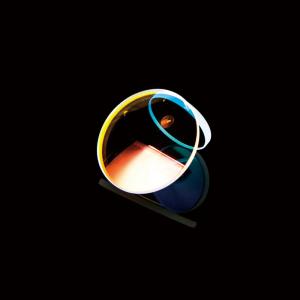
Customize Optical Glass Plane Mirrors with Protected Coating
Optical mirrors consist of metallic or dielectric films deposited directly on a substrate such as glass, differing from common mirrors, which are coated on the back surface of the glass. As a consequence, the reflective surface of an optical mirror may be subject to environmental conditions. -
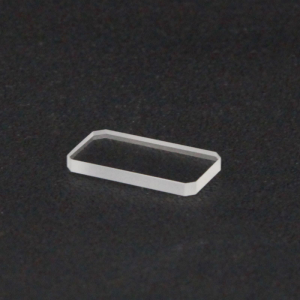
Bk7 Optical Glass Windows UV Coating Quartz Window
Optical windows are often made of glass, but can also be made of other materials such as quartz, sapphire, or fiber optics. Optical windows can be either flat or curved.
Optical Prisms are used to redirect light at a designated angle. Optical Prisms are ideal for ray deviation, or for adjusting the orientation of an image. An Optical Prism's design determines how light interacts with it. When light enters an Optical Prism, it either reflects off an individual surface or several surfaces before exiting, or is refracted as it travels through the substrate.
This application is utilized by refractometer and spectrographic components. Since this initial discovery, prisms have been used in "bending" light within a system, "folding" the system into a smaller space, changing the orientation (also known as handedness or parity) of an image, as well as combining or splitting optical beams with partial reflecting surfaces. These uses are common in applications with telescopes, binoculars, surveying equipment, and a host of others. -
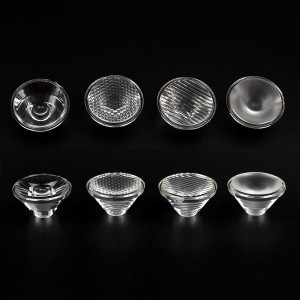
Optical LED Glass Lens for Parking High Pole Light
Lenses are designed for use with single or multiple LEDs. This includes LED modules or strips. They sit over the LEDs to create the desired lighting effect. Various properties of LED lenses enable precise control over the beams of light.
The lens directs light from the centre of the source to the reflector, which then sends out a controlled beam in whichever direction it is designed to. Apart from this, additional surface treatments can be applied to shape light distribution. LED reflectors are smooth, multifaceted inside, and come in different shapes.
-
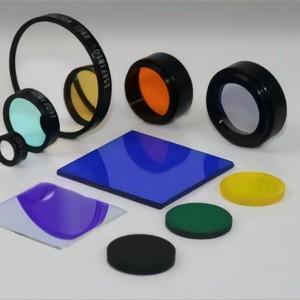
Optical Filters Kinds of Band Color Filters
An optical filter is a device that selectively transmits light of different wavelengths, usually implemented as a glass plane or plastic device in the optical path, which are either dyed in the bulk or have interference coatings.
An optical filter selectively transmits one portion of the optical spectrum, while rejecting other portions. Commonly used in microscopy, spectroscopy, chemical analysis, and machine vision, Edmund Optics' optical filters are available in a variety of filter types and precision levels.
-
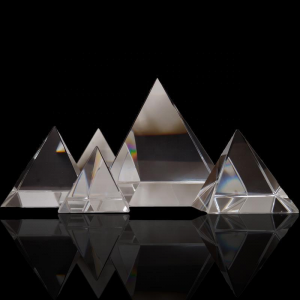
Custom Reflection Professional Stable Optical Polygonal Glass Prism
Prism, in optics, a piece of glass or other transparent material cut with precise angles and plane faces, useful for analyzing and reflecting light. An ordinary triangular prism can separate white light into its constituent colours, called a spectrum.
Prisms can be made from any clear compound and are generally cut with specially angled facets. The defining optical property of prisms is that they bend light. The material that the prism is made from and the number and angle of the facets affect how light coming through the prism is reflected, refracted and dispersed.












